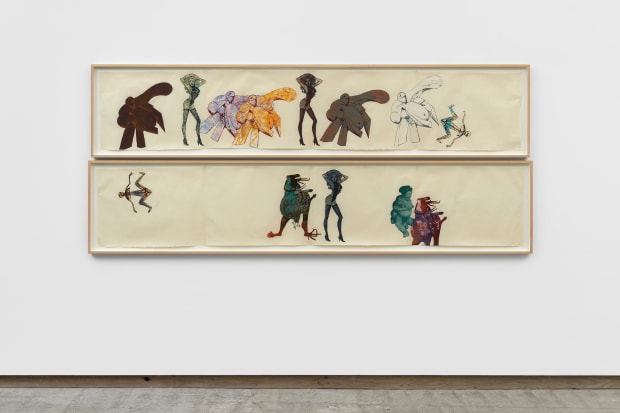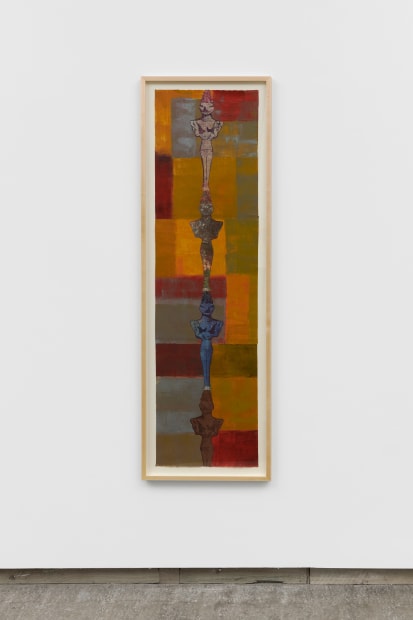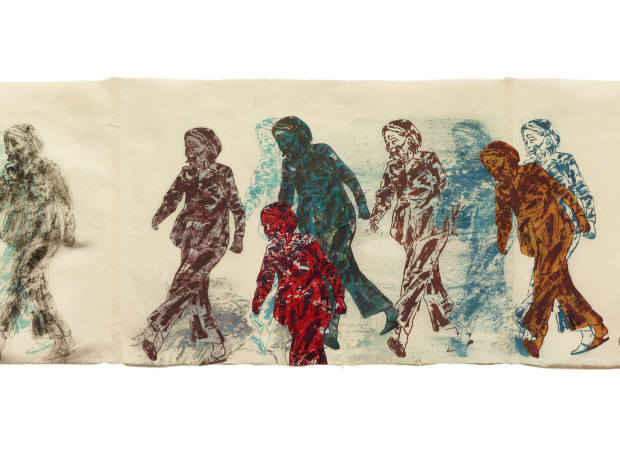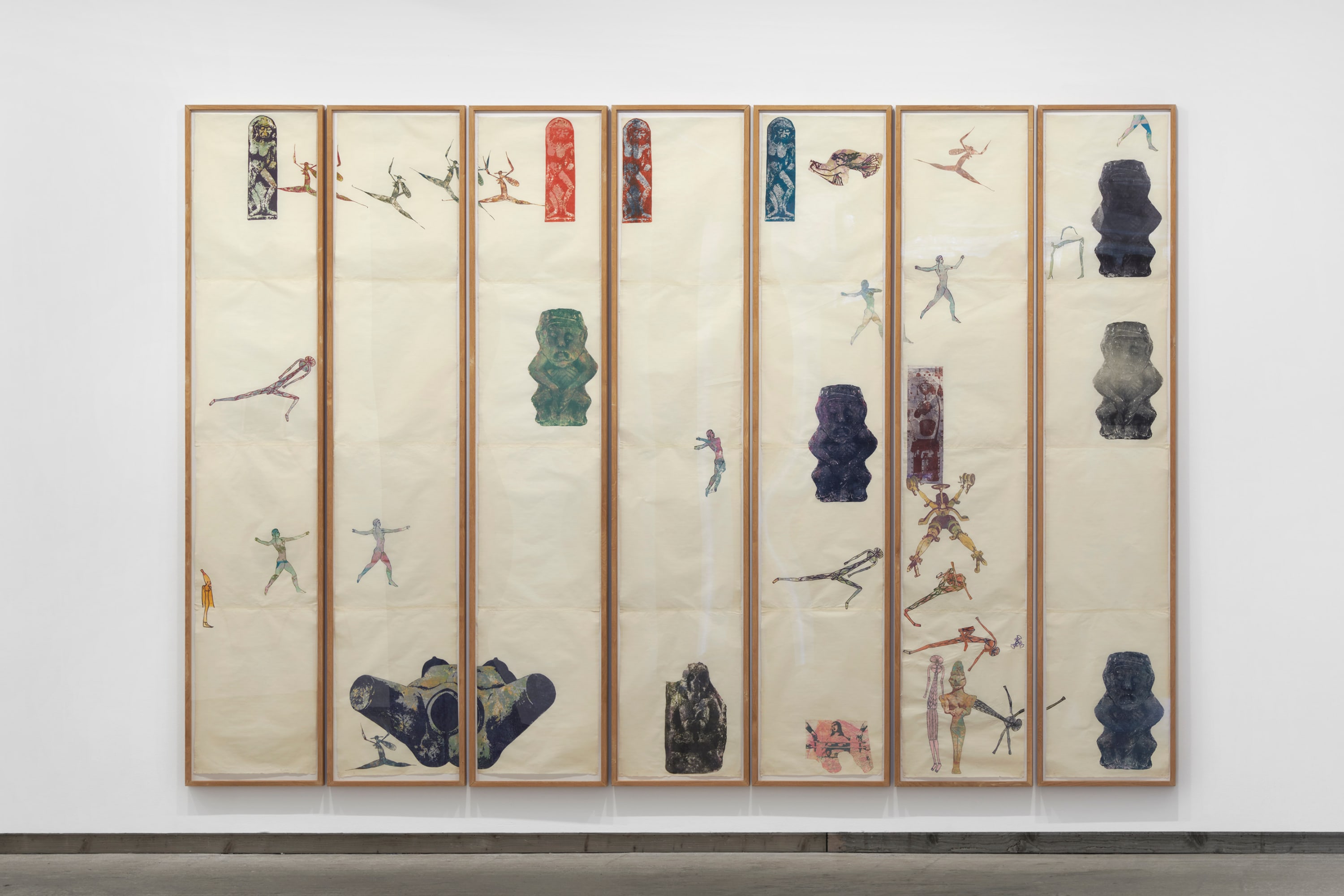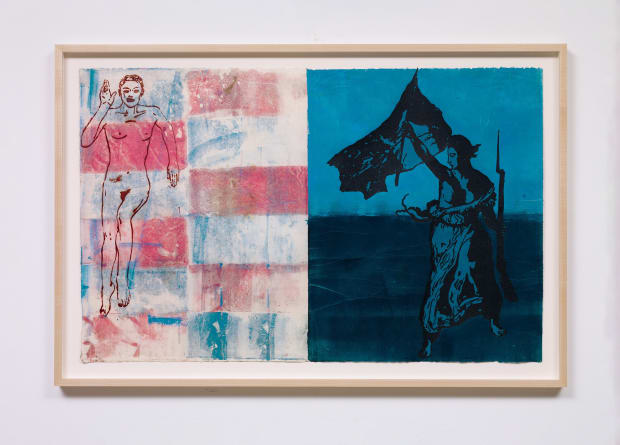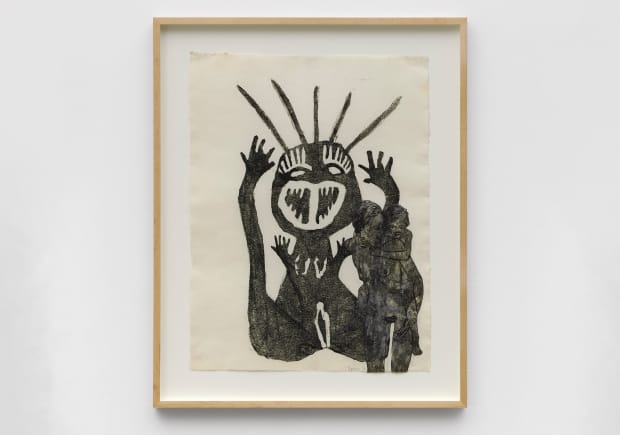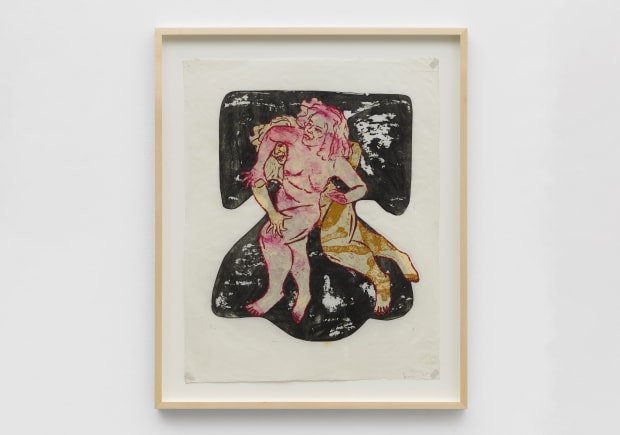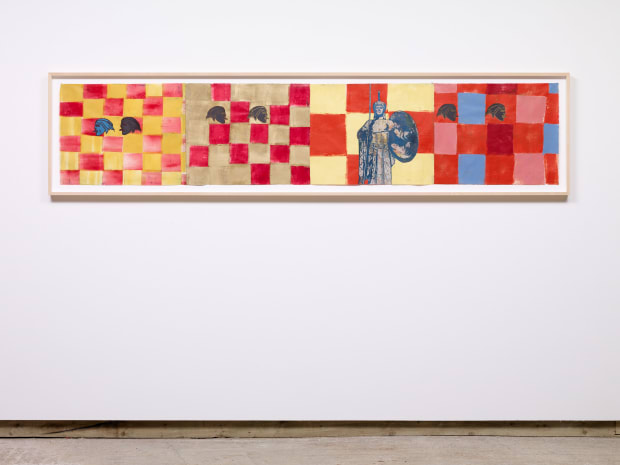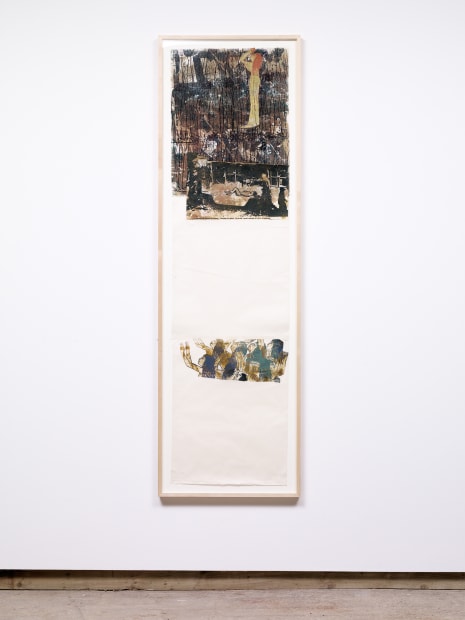Nancy Spero: Dancers & Goddesses
-
-
Frith Street Gallery is pleased to present Dancers & Goddesses, the gallery’s first exhibition representing the Estate of Nancy Spero (1926–2009). Focussing on a particularly productive time for the artist, 1984–96, Dancers & Goddesses shows the dynamic range of Spero’s ‘pantheon’ of figures, including athletes, mourners, dancers and goddesses.
After spending the early 1960s in Paris, where she made her series of Paris Black Paintings, Spero returned to New York in 1964 amid the unrest of the Vietnam War. Rejecting paint-on-canvas as ‘too heroic’, Spero devoted the rest of her life to working on paper, starting with the War Series (1966–70), paintings that confronted American aggression in Vietnam. She then worked on the Artaud Paintings (1969–70) and Codex Artaud (1971–72), tapping into the rage of the French poet Antonin Artaud (1896–1948) by integrating snippets of his poetry into her work. Notes in Time (1979), now in MoMA’s collection, marked one of the last works where she used language as a core medium.
In the 1980s, she believed that the images could provide her with a hieroglyphic language, and she developed her own lexicon of ‘woman as protagonist and hero’: about 400 images of women, drawn from across art history, media and mythology, which she used and reused over the next three decades. With her cast of women from all walks of life, Spero wanted to reverse the tradition of portraying men as heroes.
Nancy Spero and Leon Golub are the subject of a display at Tate Modern until spring 2023 and Notes in Time (1979) is now on display at MoMA.
Dancers & Goddesses is organised in collaboration with Galerie Lelong & Co. and the Spero Golub Foundation.
-
‘I articulate women’s situation and actions from repressed, victimized states to buoyant, self-confident stances.’
-

-

-

-

-

-
‘I combine in one work figures derived from various cultures whose extremely diverse and often disproportionate body sizes and types coexist in simultaneous time.’
-
 Propitiatory, 1993
Propitiatory, 1993Propitiatory is a significant multi-panel scroll work that features a large repertoire of Spero's female figures and goddesses, including multiple Sheela-na-gigs, a Cycladic idol, a Greek goddess, contemporary and ancient athletes, and an anatomical torso. The title Propitiatory – to try to gain the favour or goodwill of a god, or anyone – could refer to the viewer's stance toward these goddesses and figures, or perhaps an ironic observation about the role of women through history. The multiple figures that seem to leap from scroll to scroll create a sense of energy and abundance.
-
-
This group of five works, spanning a decade of the artist’s life, together express the struggle and conflict of women across centuries.
Hanging high on the wall, the frieze-like composition of Monsters 2 (1984) depicts on the far left the torso of a woman clutching her breasts, on the far right a woman wielding a club to some aggressor beyond the confines of the work, and at the centre of the scroll a mysterious, bucktoothed monster flanked by four women running in different directions. The mood of the work is prehistoric or primeval, suggesting violence at the dawn of time.
On the far left, Hanging Totem II (1986) depicts violence against women across cultures and eras. At the top of the scroll, a medieval image of women being hanged as witches gives the overall composition a strong gravitational force, with the gallows forming an upper border. As the scroll moves downward, reinforced by red lines, Spero deploys more images of violence against women, including press images of a Cambodian woman crying before being executed, and a repeat of the gallows from the top of the work.
-

-

-

-

-

-
‘These are female bodies – I use them to speculate on what is possible and to comment upon immediate events – political, sexual, rites of passage or otherwise.’
-
-

